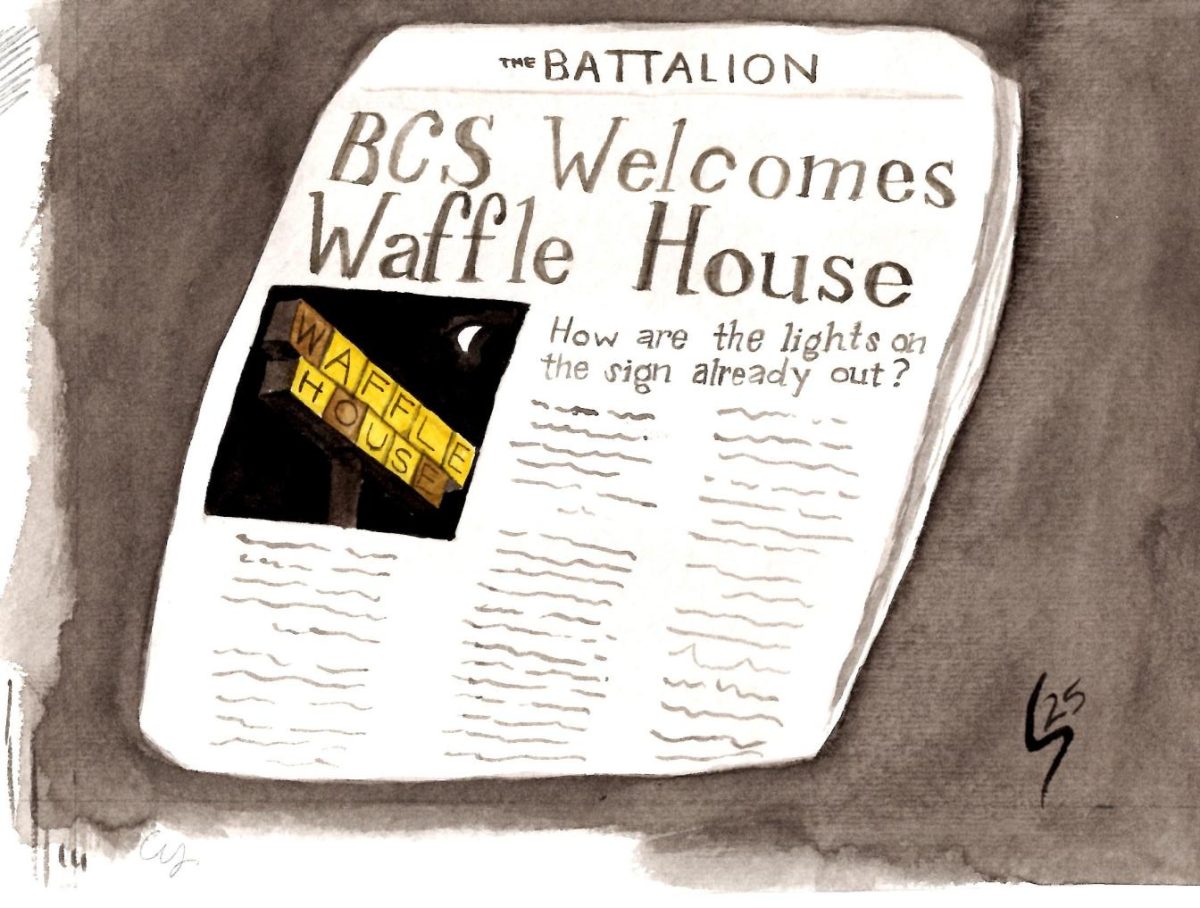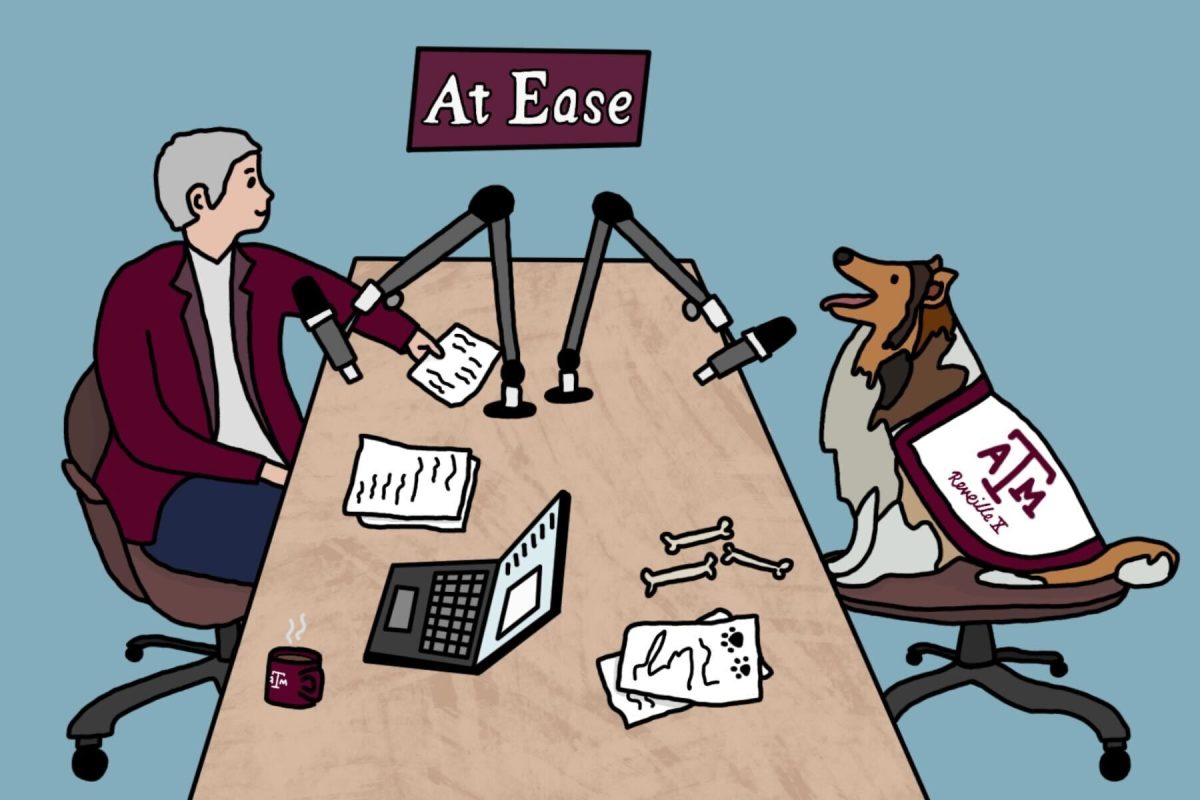“Why did you decide to run? How busy are you? So, what can you actually do?”
These are just a few of the frequently asked questions I receive while serving as student body president, or SBP, at Texas A&M.
A majority of people at A&M don’t know what my role entails or even what the Student Government Association, or SGA, does for students. And you know what? I don’t blame them. For too long, the SGA has existed almost separately from the individuals they are meant to represent. The SGA has been stereotyped as an insular organization, seemingly exclusively focusing on internal politics and self-centered agendas.
However, as an individual who had never participated in SGA prior to my election, I’m here to change this stereotype. It’s time to open the curtain on student government and for students to truly discover the nature of the organization.
Let’s start with the first frequently asked question: why I decided to run. Like many of you, I could not name the SBP when I was a freshman or a sophomore, nor had I heard of SGA. This changed junior year when my friend, Case Harris, was elected as SBP. His election showed me a glimpse of the positive impact student government can make at A&M.
I realized SGA accomplished so much more than most students understand. In fact, I guarantee that almost every individual reading this has interacted with SGA in some way.
Have you volunteered with The Big Event? Attended a Silver Taps ceremony? Said “Here” for a fallen Aggie at Muster? You may not realize it, but all of these events are hosted by organizations within the executive branch of the SGA: The Big Event, Traditions Council and Muster Committee, respectively.
Because of SGA, every student now has access to mental health resources in a tab on their Canvas portal. Because of SGA, more students have access to free online textbooks through the Open Educational Resources program. Because of SGA, no students will be ticketed for living with more than four unrelated individuals in College Station this year. Understanding all of these aspects of SGA allowed me to create my platform.
I ran for one simple reason, and that was to implement tangible changes that positively impact the daily lives of students here at A&M. Coming from outside of SGA, I knew there was an opportunity to not only continue the progress made by Case but also utilize SGA’s resources to make progress on issues that students really care about: virtual student IDs, free Scantrons and other initiatives.
Now, there is a large difference between making those claims and actually delivering IDs and Scantrons to our student body, especially within a one-year term length. Let me tell you, this is no small feat.
As students, we want our concerns to be heard and for the administration to act upon them immediately. However, what we often fail to realize is that A&M is the largest university in the U.S. by student population. With more students comes more administrators to serve students, which means that enacting change on this campus is not simple. Each new idea must be passed through multiple levels of bureaucracy and scrutinized thoroughly so every student has the opportunity to benefit.
For example, providing free Scantrons has worked a little something like this. Myself and SGA have advocated on behalf of this policy to the provost, the chief academic officer on campus. The provost then communicated this desire to the Council of Deans, a meeting where the heads of each individual college at A&M convened. After this, the deans determined how to transfer or receive money from different sources to fund the free Scantrons. After they sourced the money, they created a plan for the distribution across campus. Because students want Scantrons to show up when they walk into class for their exam, the Scantrons must then be distributed to individual academic departments. Only after all of these prerequisites have been accomplished can your professor take the necessary amount of Scantrons from their department office and take them to an exam for you to benefit.
With that being said, free Scantrons have begun to appear across a large portion of the university and should be fully rolled out by the end of this semester.
Thus, to answer the second and third questions, we are busy advocating for the best interests of the student body at all times. Not only must we present the ideas for improvement to individuals like the provost, university president and chancellor, but we must also ensure that every step of the process for the implementation of said ideas are completed. Additionally, I am here to ensure that these opportunities for advocacy make positive changes for students as immediately as possible. Gone are the days when students feel like they have no connection with their student government and that the SGA is unable to do anything to serve the student body. We have already seen this year the power we have in influencing the university for the better, and it is my job to continue to do so through connecting with y’all — the students.
We are entering a new era of student government this year. One that engages with the student population, understands your wants and needs and successfully advocates for the timely implementation of those desires. Simply put, I am here to transform the SGA and ensure we implement tangible solutions that benefit the majority of students. My email is [email protected], and I am always open for any questions, comments or concerns you may have. Please do not hesitate to reach out.
Thanks, and Gig ‘Em!
Hudson Kraus
Letter from student body president
August 30, 2023
Photo by Photo by Jonathan Taffet
Junior finance major Hudson Kraus poses for a photo in the Battalion studio on Friday, Feb. 24, 2023.
0
Donate to The Battalion
$70
$2500
Contributed
Our Goal
Your donation will support the student journalists of Texas A&M University - College Station. Your contribution will allow us to purchase equipment and cover our annual website hosting costs, in addition to paying freelance staffers for their work, travel costs for coverage and more!










